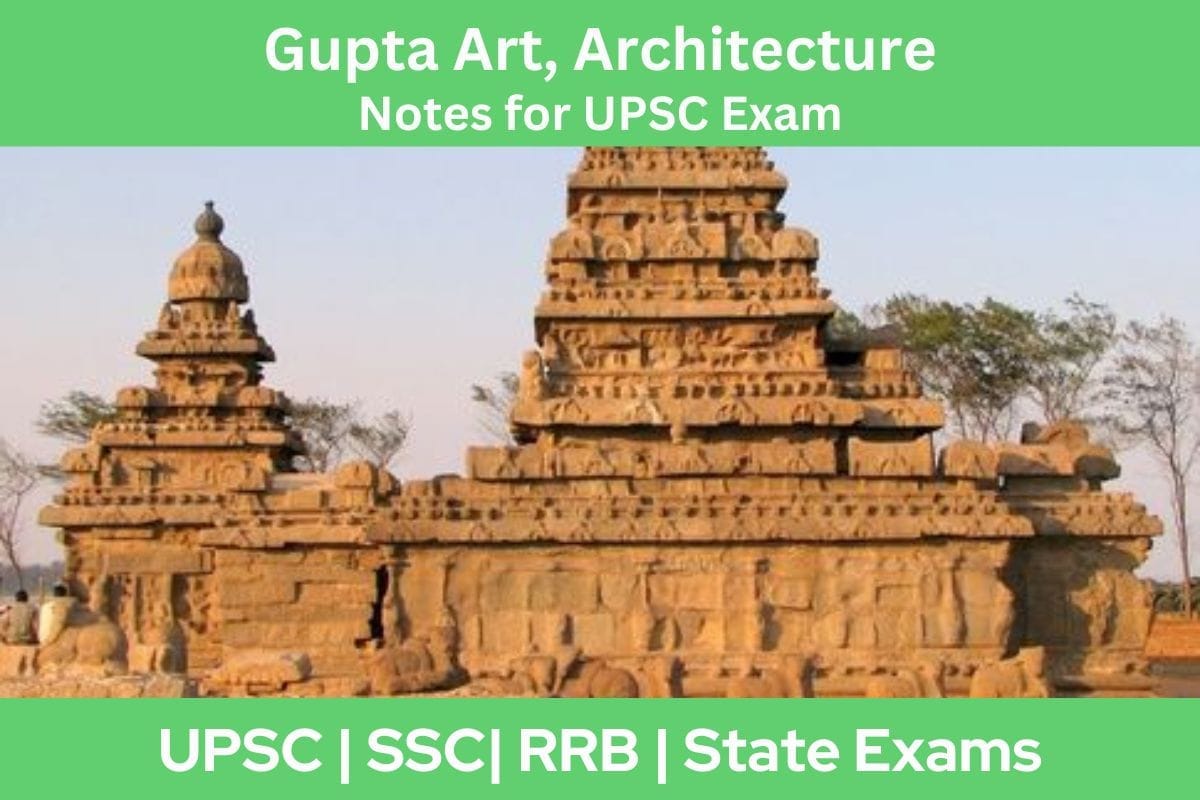
The Gupta Period: Art and Architecture
- During the Gupta age, art and architecture showcased rich diversity in features, styles, and designs.
- The Gupta rulers were pioneers in creating Hindu cave temples in India, setting a remarkable precedent.
- This era is renowned for its excellence in various aspects of Indian culture and art. Let’s explore the architecture and art of the Gupta Empire, along with a glimpse into the evolution of Indian classical music.
Gupta Architecture:
- Gupta architecture encompasses paintings, sculptures, and temples, each displaying unique characteristics.
- The Gupta rulers played a crucial role in establishing Hindu cave temples across India, leaving a lasting impact on architectural history.
Artistic Excellence:
- The Gupta era stands out for its exceptional contributions to Indian culture and art, demonstrating a high level of artistic proficiency.
Gupta Empire Architecture:
- The Gupta Empire, led by Sri Gupta, was effectively established around 240-280 CE, marking a significant period in Indian history.
- The time from the 4th to the 6th century, known as the Golden Era of India, saw remarkable achievements in philosophy, science, and art.
- Gupta age architecture included sculptural temples and rock-cut caves. Guptas established Buddhist rock-cut temples at Bagh, Madhya Pradesh, and Ajanta, Maharashtra.
In the Gupta period, Hindu structural temples emerged for the first time in India, including:
- Varaha and Vishnu temples in Madhya Pradesh
- Kankali Devi temple at Jabalpur
- Mahadeva and Parvati temple at Nachna Kuthara
- Dasavatara temple at Deogarh
Important points to remember:
- Gupta art, primarily found in Bagh and Ajanta caves, focused on paintings. Before Guptas, Hinduism was known as the “Vedic religion.” Chandragupta II erected the iron pillar in Delhi with inscriptions from the Gupta era, bearing his name.
- The Gupta Empire, the fourth-largest political entity in India, followed a decentralized administration. Gupta architecture advanced knowledge and architects, leaving a positive impact on Hinduism.
- Temples depicted gods and goddesses, particularly Lingams and Vishnu avatars, fostering art and architectural development.
- Guptas excelled in philosophy, religion, astronomy, logic, dialectics, art, engineering, and science, contributing significantly to Hinduism and India’s art and architecture.
Development of Indian Classical Music in Gupta Era
- Gupta’s era stands out for excellence in Indian culture and art, including Indian classical music.
- Influenced by Vatsyayana and Kalidasa, Kalidasa wrote about various musical instruments like Shankha, Vamshi, Mridang, Pushkar, Vipanchi Veena, and Parivadini Veena.
- He also explored song types like Apsarogeeti, Streegeet, Kakaligeet, Swarasaptaka, Tana, and Murchana, shaping the development of Indian classical music.
Some important points
- In the Gupta period, Vatsyayana, through his work “Kamasutra,” listed about 64 arts or Kalas. In this comprehensive guide, he described various musical instruments used for playing, dancing, and singing among these 64 arts.
- Fa-Hien, a visitor to India during the Gupta era, observed the widespread prevalence of music in Indian society. Temples during this time hosted various forms of Indian classical music.
- Gupta’s era played a crucial role in the development of Indian art, architecture, and classical music.
- In the Vedic era, priests composed hymns, but the Gupta period witnessed significant progress in Indian music.
- Vatsyayana and Kalidasa contributed by describing different instruments that enhanced Indian music.
- Many historians refer to the Gupta era as a Golden era for cultural development, with royal support for music. Skilled women in this period chose entertainment and music as their professions.
- During the Gupta era, places like Sangeet Graha and Natya Shaala served as gathering spots for entertainment. Chandragupta of the Gupta era was not only a highly trained ruler but also a skilled musician.
- The era significantly advanced music and cultural activities. Two notable figures in Chandragupta Vikramaditya’s royal court were Amarsimha and Mahakavi Kalidas. Common instruments in Indian classical music during this period included Mridang, Veena, Venu, and Sankha.







